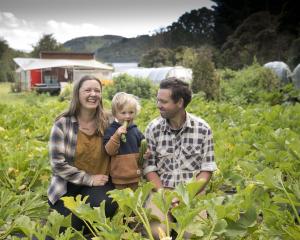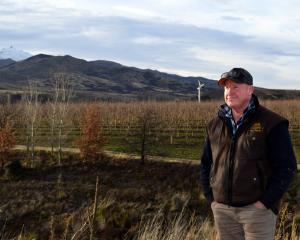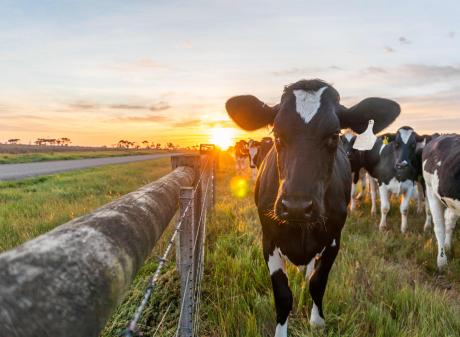
An 18-tonne digger sunk deep in a blueberry orchard is a stark reminder of the spongy nature of peat in Western Southland.
Blueberry Country orchard manager Kowie du Plessis said the establishment of the Blueberry Country orchard in a peat bog in Otautau began nearly 20 years ago.
The peat soil was naturally acidic and blueberry bushes thrived in it.
Peat is formed by the partial decomposition of vegetable matter in the wet acidic conditions.
Its sponginess hampered any work on the orchard requiring machinery.
"We get our equipment stuck a lot," Mr du Plessis said.
When Southern Rural Life visited, the land between the bushes was in its firmest state and was similar to walking on a trampoline.
The transformation from a bog to an orchard meant a lot of excavation machinery had to be recovered, he said.
Some machinery made it out, some remained stuck. A new 18-tonne digger was "swallowed" by the peat bog.

"The operators were losing the horizon so they pulled pins."
The only parts salvaged was the digger’s radio and its digging bucket.
Blueberries were being grown on about 60% of the more than 220ha orchard.
A blueberry bush took about five years to produce fruit. The plan was to plant another 45ha.
As peat never settled, it was difficult to install infrastructure, such as bird netting, because it would require constant work, including regular wire tensioning.
A pole would need to be driven down about 30m to reach bedrock, he said.
Shelter belts were planted to shield the blueberry bushes from the wind. When trees planted in peat swayed in the wind, they sank.
The use of fertiliser was "tricky" because a characteristic of peat soil was its low retention of nitrogen, phosphorus and potassium.
Nitrate-based nitrogen could not be used because the oxygen in the peat oxidised it, thus raising the soil pH levels, which were naturally between 4.5 and 5.5.
To get around that, Mr du Plessis used a mixture of ammonium and nitrite nitrogen.
Peat soil had high levels of calcium, magnesium and sodium but it lacked an ability to supply the minerals to the blueberry bushes.

About five tonnes of blueberries were hand-picked during an average day of the harvest.
Usually about 80% of those blueberries were sold fresh to market. The rest were frozen and most were sold to Barker’s in Canterbury.
About 40 species of blueberries had been trialled and "Northern Highbush" was best suited to the orchard.
A blueberry block could produce up to 22 tonnes per hectare.
The best block last season had 8.5 tonnes per hectare.
"We have a long way to go yet," he said.
If the orchard consistently produced 10 tonnes per hectare he would be "as pleased as pie".
Factors affecting the yield included there being no irrigation due to difficulties installing the infrastructure in the peat and birds eating the berries.
Bird control methods trialled included feeding bird seed laced with tranquilliser and using decoys, drones, gas canons, lasers, scents, traps and speakers transmitting the stress calls of bird.
The control methods produced mixed results.
One constantly used method was shotguns. Consequently, harvested berries were put through a metal detector to find shotgun pellets.
"We don’t want you losing a filling," he said.
shawn.mcavinue@alliedpress.co.nz















